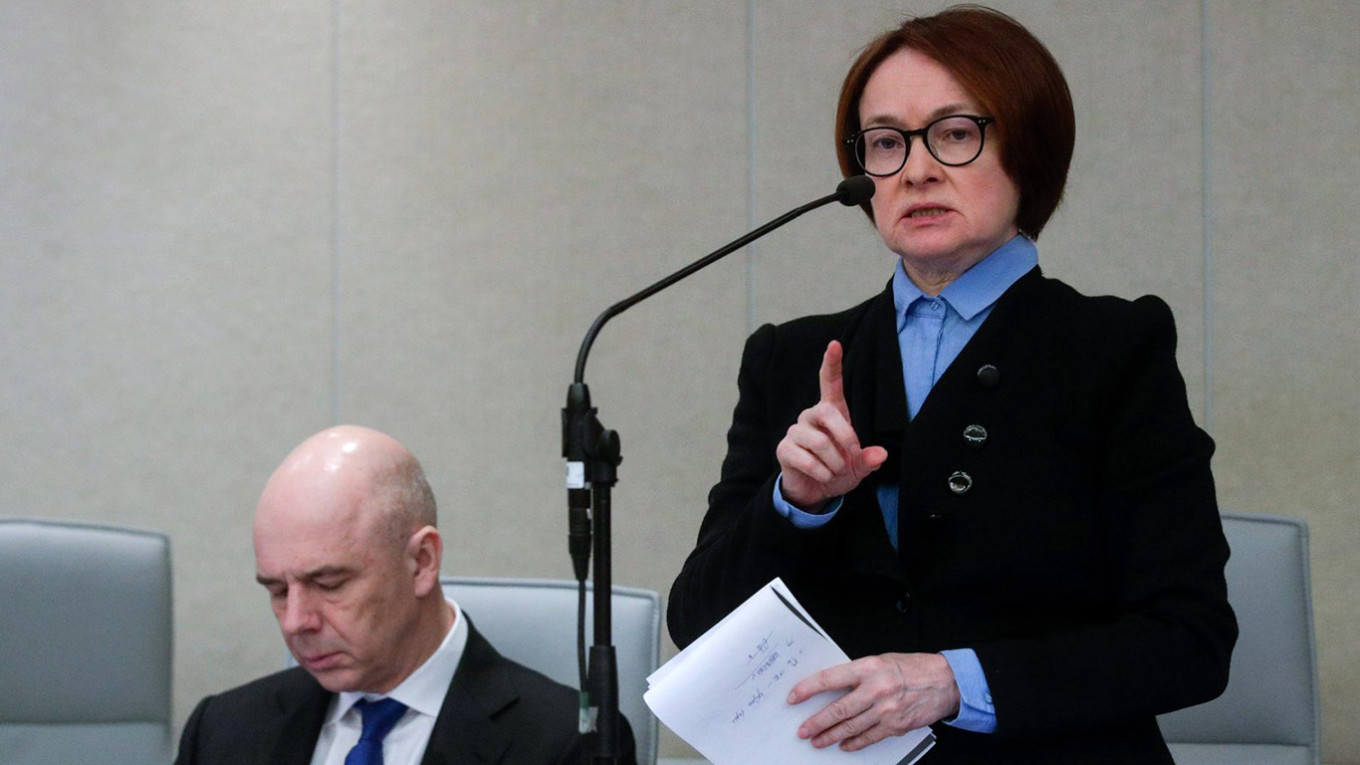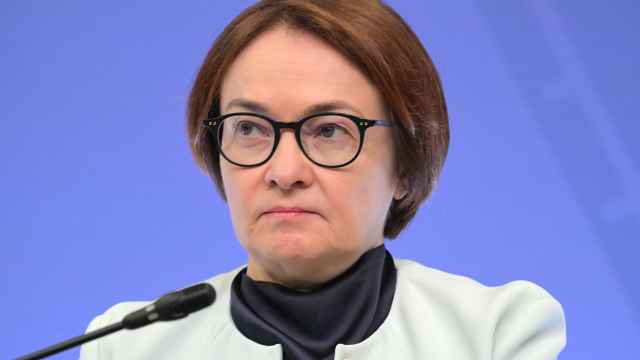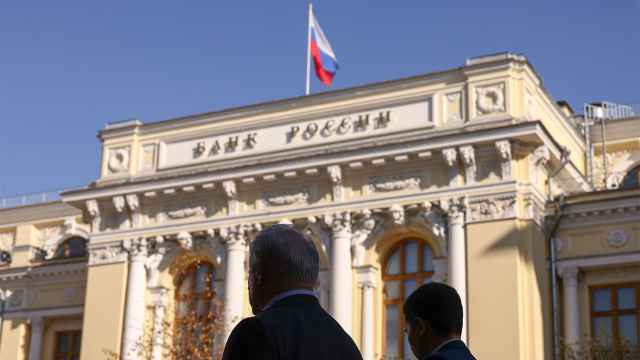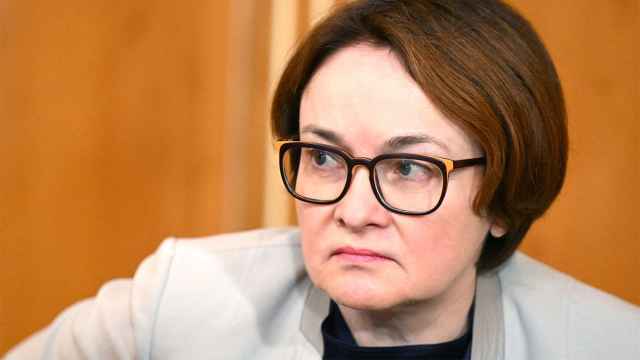Amid record-high interest rates and an economy showing signs of slowing down, Russian businesses and analysts are warning of a growing debt problem that could lead to a wave of bankruptcies.
Here's what we know — and what economists and analysts are saying:
What are the warnings?
Russia is entering its second consecutive year of record-high interest rates, intensifying pressure on businesses as the Central Bank works to curb inflation largely driven by war-related government spending.
The Central Bank started raising rates in July 2024, pushing its key rate from 16% to a peak of 21% before settling at 20% in June 2025.
This prolonged monetary tightening has drawn growing criticism, particularly from the manufacturing sector, which relies heavily on credit to finance equipment and raw materials.
Sergei Chemezov, chief of the state defense conglomerate Rostec, has blamed sky-high rates for shelved projects and liquidity shortages, while steel magnate Alexei Mordashov has warned of serious damage to the metallurgy sector.
Citing unnamed Russian banking officials, Bloomberg reported that the economy faces a “credible risk of a systemic banking crisis in the next 12 months” due to rising levels of bad debt accumulated by firms.
What are the troubling signs?
Several warning signs indicate companies are increasingly struggling to repay their debts.
The clearest sign is the rising share of company revenue going toward interest payments. Business interest costs could exceed 15 trillion rubles ($172 billion) in 2025 compared to 11.5 trillion rubles ($150 billion) in 2024 and just 6.3 trillion rubles ($82 billion) in 2023, analyst Pavel Ryabov noted.
In the first quarter of 2025 alone, companies paid 3.73 trillion rubles ($48.5 billion) in interest, up 58% year-on-year, Ryabov said.
This spike has coincided with an uptick in problematic debt. According to the government-linked Center for Macroeconomic Analysis and Short-Term Forecasting, the share of overdue corporate debt rose by 11% between September 2024 and March 2025. The most affected sectors include coal mining, machinery repair and installation, metallurgy, and rail, ship and aircraft construction.
While the overall number of corporate bankruptcies remained stable in 2024 at 8,197, high interest rates weigh heavily on company balance sheets, including those of firms linked to the defense industry.
Companies experiencing trouble include Optron-Stavropol, a key producer of electronics for the defense industry that is on the brink of bankruptcy, as well as Angstrem, a microelectronics company that works with the Defense Ministry and whose assets have been put up for sale.
Some sectors, like coal, are under particularly severe pressure, with debt in the coal industry projected to hit 1.5 trillion rubles ($19.5 billion) by the end of 2025.
How bad are things, really?
Despite mounting pressure on companies, Russia’s overall macroeconomic indicators remain relatively solid.
First, the total amount of non-financial corporate debt — that is, debt accrued by companies not engaged in financial services, such as manufacturers and retailers — is still moderate by historical and global standards.
While this debt has nearly doubled from 40 trillion rubles in the pre-war year of 2021 to 74.8 trillion rubles ($972 billion) by December 2024, it declined slightly to 72 trillion rubles ($936 billion) by May 2025.
But thanks to economic growth over the same period, Russia’s debt-to-GDP ratio has remained relatively stable, rising from 31% in 2022 to around 36% in 2025 — far lower than China’s (140%), the U.S.’s (77%) or France’s (75%).
Russian household debt stands at 36.7 trillion rubles ($460 billion) or 18% of GDP, compared to over 60% in France, the U.K. or Italy.
Second, although bad debt is rising, it is not yet overwhelming.
"Truly troubled [large] companies account for about 8% of debt ([compared to] 5% by the end of 2023). In general, the corporate sector retains financial stability and the ability to service obligations to creditors. Nevertheless, individual bankruptcies of borrowed companies are still possible,” the Central Bank said in its latest macroeconomic stability report, covering the 78 largest Russian companies.
Similarly, according to state statistics agency Rosstat, enterprises' overdue accounts payable amounted to 4.6% of the total loan volume, or 5.5 billion rubles ($71.5 million), as of March.
Rosstat's estimates of corporate debt are higher than those of the Central Bank because Rosstat's figures include all liabiltiies, not just bank loans.
Meanwhile, top lenders Sberbank and VTB have reported a rise in non-performing consumer loans—but not to levels seen during the 2014-15 banking crisis.
Third, corporate borrowing is slowing down rather than accelerating to dangerous levels.
According to Central Bank data, the aggregate volume of loans granted by banks to companies decreased by 0.1% in the first quarter of 2025 compared to the previous quarter.
This slowdown followed a 2.9% growth in the corporate debt portfolio in the fourth quarter of 2024 compared to the third quarter.
The Central Bank forecast that this year the growth of banks' loan portfolio will slow down to 8-13% compared to 17.9% in 2024 and 20% in 2023.
Fourth, both the government and the banking sector appear to have enough reserves to manage potential defaults.
Russia’s budget deficit is below 2%, and its public debt is just 16% of GDP — low figures compared to those of developed economies. Central Bank Governor Elvira Nabiullina said Russia has a capital buffer of 8 trillion rubles ($104 billion) to weather defaults.
In May, Russian rating agency ACRA said leading banks exceed the 8.75% capital adequacy minimum set by the Central Bank, despite higher credit risks for some.
"The decline in aggregate capitalization indicators of the banking sector does not appear critical," it said.
The H1.0 ratio, a key measure of a bank’s resilience to credit risk, remains above target for most major banks.
What to expect next?
Although the Kremlin appears to have avoided runaway inflation while transitioning to a war economy, the cost has been steep.
Companies are struggling to afford loans at current rates, slowing the economy as more projects are shelved and bankruptcies begin to rise, with an increasing number of firms unable to service their existing and newly acquired debts.
For example, according to the Central Bank's figures, risky new corporate debt restructurings totaled 100 billion rubles (approximately $1.3 billion) in the first quarter of 2025 and at 127 billion rubles (approximately $1.64 billion) in the fourth quarter of 2024, up from 45 billion rubles ($585 million) in the third quarter of 2024.
Many firms are refinancing pre-2024 debt with higher-cost loans, potentially setting themselves up for a deeper squeeze later on, economist Dmitry Nekrasov said in a recent podcast interview.
In the U.S., for example, the lag between raising the key interest rate and an uptick in bankruptcies is about two years, he said. He added that while some smaller Russian banks may go under, the result will likely be consolidation, not collapse, of the banking sector.
So far, banks appear capable of restructuring troubled debts. According to economist Vladislav Inozemtsev, a full-blown crisis would require banks to aggressively seek repayment, which hasn’t happened yet.
“The trends [towards debt problems] are there, but to the extent that they are explosive and disruptive to the system, I certainly wouldn't go so far as to say we're on the verge of collapse just yet,” he said.
Large defense firms in financial trouble can still restructure their debts with support from major banks and the government, which for now have the reserves to provide backing, the owner of a small manufacturing firm told The Moscow Times.
“Bankruptcies among smaller businesses, including those in the defense sector, will grow, but their assets can often be repurchased by other companies rather than being directly rescued by banks or the government," he said, speaking on condition of anonymity.
In practice, this means that a plant producing equipment for the Defense Ministry could go bankrupt, only for another firm to buy its machinery at a discount and continue operations under new management.
A Message from The Moscow Times:
Dear readers,
We are facing unprecedented challenges. Russia's Prosecutor General's Office has designated The Moscow Times as an "undesirable" organization, criminalizing our work and putting our staff at risk of prosecution. This follows our earlier unjust labeling as a "foreign agent."
These actions are direct attempts to silence independent journalism in Russia. The authorities claim our work "discredits the decisions of the Russian leadership." We see things differently: we strive to provide accurate, unbiased reporting on Russia.
We, the journalists of The Moscow Times, refuse to be silenced. But to continue our work, we need your help.
Your support, no matter how small, makes a world of difference. If you can, please support us monthly starting from just $2. It's quick to set up, and every contribution makes a significant impact.
By supporting The Moscow Times, you're defending open, independent journalism in the face of repression. Thank you for standing with us.
Remind me later.







